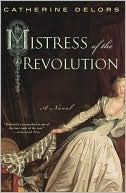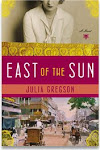
By Catherine Delors
At Versailles, not only the Queen, but princesses of the royal blood were required to give birth in public. Why? To prevent any substitution of the infant in case he was destined to reign. I say “he” by design, because France’s unwritten constitution prevented women to step unto the throne in their own right, though they could, and often did govern the Kingdom as Regents.
In the case of Marie-Antoinette, her first laying-in was all the more eagerly awaited that she had been married for eight years without presenting her husband with an heir. For a Queen, this was a glaring failure. Her sister-in-law, the Comtesse d’Artois, married to the King’s youngest brother, had already been delivered of two healthy little boys. Marie-Antoinette had attended the deliveries, as required by the etiquette, and deeply felt the political and personal humiliation of her own childlessness.
Now at long last she herself was pregnant. The stakes could not be higher: if the child were stillborn, or a girl, the heir to the throne would remain the Comte de Provence, another brother of Louis XVI. The Comte de Provence was cunning, ambitious, and probably the most dangerous enemy of the royal couple. Every year that passed without Marie-Antoinette giving birth to a Dauphin brought him closer to the throne (to which he would eventually ascend, decades later, under the name of Louis XVIII.)
Let us listen to what Madame Campan, First Chambermaid to Marie-Antoinette, tells us in her irreplaceable Memoirs: “The Queen’s laying-in approached; Te Deums were sung and prayers offered up in all the cathedrals. On December 11, 1778, the royal family, the Princes of the royal blood, and the Great Officers of State spent the night in the rooms adjoining the Queen's Bedchamber.” This, by the way, was days ahead of time because the child would not be born until the 19th of December.
Finally, before noon, it became certain that the birth was imminent. “The etiquette,” continues Madame Campan, “allowing all persons indiscriminately to enter at the moment of the delivery of a queen was observed with such exaggeration that when the obstetrician said aloud: “The Queen is going to give birth!” the persons who poured into the chamber were so numerous that the rush nearly killed the Queen. During the night the King had taken the precaution to have the enormous tapestry screens which surrounded Her Majesty’s bed secured with cords; but for this they certainly would have been thrown down upon her. It was impossible to move about the chamber, which was filled with so motley a crowd that one might have fancied himself in some place of public amusement. Two chimney-sweeps climbed upon the furniture for a better sight of the Queen.”
Marie-Antoinette fainted. Was it simply pain? The body heat created by the crowd packed in the bechamber? The feeling of being exposed to strange eyes in a circus scene? Or the pressure to give birth to a boy? Apparently Marie-Antoinette and her friend the Princesse de Lamballe, Head of the Queen’s Household and member of the royal family, had agreed on a sign the Princesse would make to inform Marie-Antoinette of the child’s gender as soon as it became apparent. Normally that announcement would have been made more formally minutes later, and Marie-Antoinette wanted to know right away. And the child turned out to be a girl! Maybe the disappointment was enough to make the Queen lose consciousness.
The obstetrician decided that the patient needed to be bled (indeed what patient wasn’t in need of a good bloodletting in the 18th century?). More sensibly by modern standards, he called for the windows to be opened wide.
The King sprung to action. The windows had been stopped up (Versailles has always been notoriously drafty) and he rushed to force them open. Let us not forget that Louis XVI was a man of unusual height and strength.
The Court’s head surgeon then seized his lancet and bled the Queen. Whether thanks to his ministrations or more likely the rush of fresh air in the stifling room, she opened her eyes. At this moment the Princesse de Lamballe, who was much given to what was then called “nervous spasms,” added to the general confusion by fainting herself. She had to be carried through the crowd “in a state of insensibility.” Only then was it deemed necessary to empty the room of all idle onlookers. “The valets,” writes Madame Campan, “dragged out by the collar such inconsiderate persons as would not leave the room.”
“This cruel custom,” continues Madame Campan, “was abolished afterwards. The Princes of the family, the Princes of the blood, the Chancellor, and the ministers are surely sufficient to attest the legitimacy of a prince.”
Certainly it was an improvement, but that still left a few dozen people to attend every royal birth...
Catherine Delors is author of Mistress of the Revolution. She also keeps a fascinating blog on all things royal during the eighteenth century.

 By Jo Marchant
By Jo Marchant

















